12+ Free (or Low-Cost) Websites to Empower Your Programming Education
Although we still talk about programming as a standalone career, the dominance of technology in our lives makes it clear that coding is much more than a career path. In my opinion, computer science is more than a college major or a high-paid job - it’s a skill, essential for thriving in a modern-day economy.
Regardless of what you want to do for a living - work in healthcare, marketing, business, or other fields - you will see more coding and have to deal with the growing number of technologies throughout your entire life.
Now that we live in a tech-driven world, asking “Should I learn to program” is almost synonymous with “Should I learn to speak, read, or count?”. The short answer is: yes.
How to start your journey in coding? The good news is, there are plenty of resources to support you all the way through. To save you the trouble of looking them up and choosing the right ones, I created my list of learning platforms that offer well-rounded programming education and help you stay competitive on the job market.
Here are 12+ useful educational resources every coding student should check out.
1. Codegym

Why I put it on the list:
- Insane level of detail - lecturers explain Java concepts carefully and methodically, without skipping arguments or oversimplifying important principles.
- 500+ hours of coding experience. As for now, only a few of my Java students managed to complete all quizzes the platform offers. There are thousands of them, both for beginners and advanced learners.
- Community-drivenness. Codegym can be your one-stop-shop for both work and play. It’s super fun to be able to share your software development journey with like-minded students and crack up over tech memes together.
- Easy-to-use IDE. I loved being able to use Codegym on the go - this way, you can code for 1-2 hours a day while commuting between meetings or waiting in lines without having to set studying time aside.
Supported programming languages: Java
Pricing: there’s a free version and a paid subscription that starts at $30/month. Once you pay the fee, you’ll have access to a built-in IDE, all quizzes, and lectures.
2. Codecademy
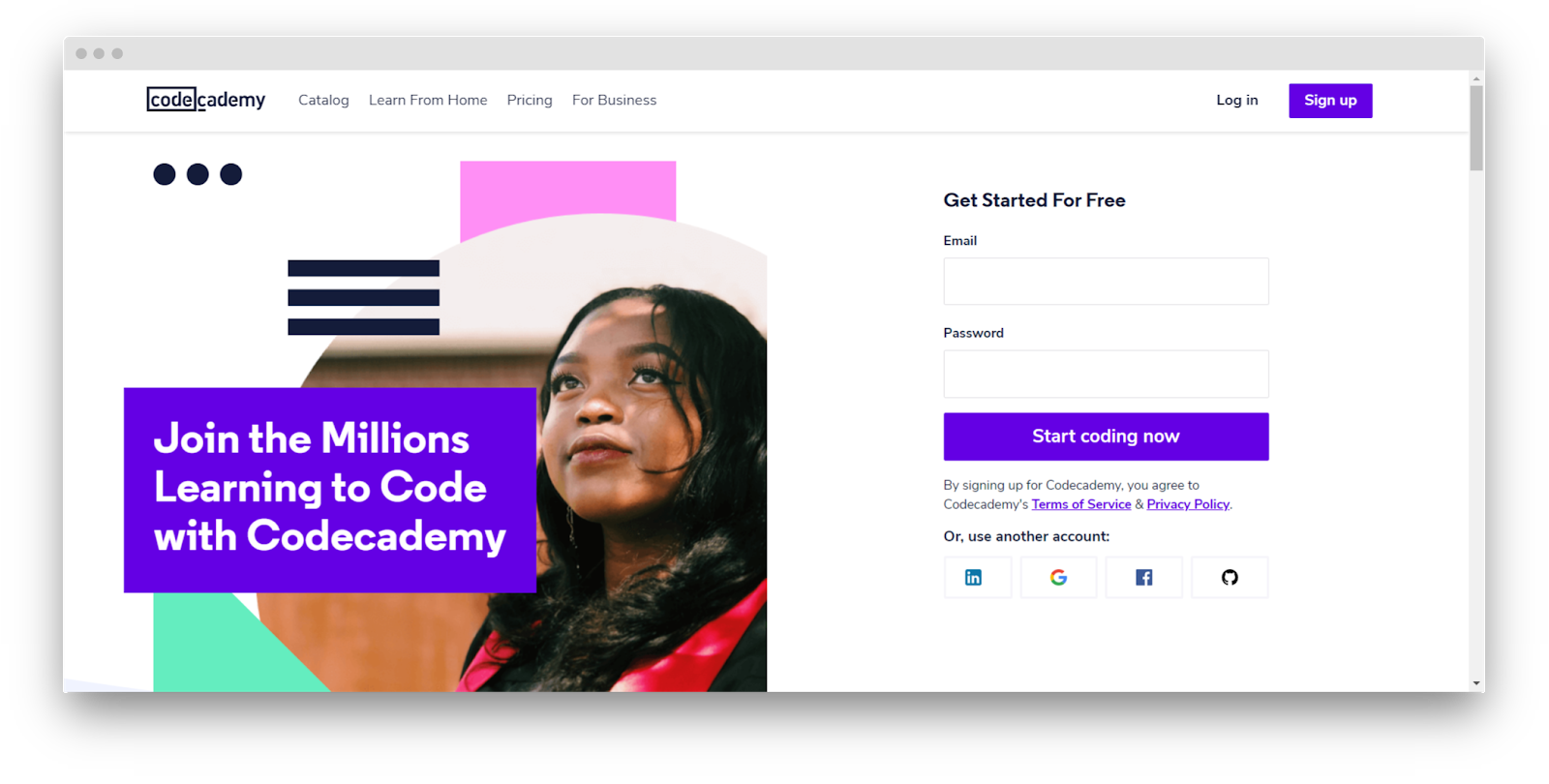
Why I put it on the list:
- Dozens of courses, some are really specific. You can choose to study anything from mainstream programming languages to APIs or AI development. The ability of the platform to support you throughout the entire programming learning journey sounds like a good enough reason to stick with it.
- These guys know how to keep students motivated. You might think that tricks like levels and badges don’t work on you - I was confident about that, too. However, once you are tired of looking at the IDE and would do anything but coding, unlocking an achievement or moving one level higher are the only things to keep you going.
- Intuitive interface. Codecademy is lightweight and easy to explore - so much so that it doesn’t feel like you are learning. The smooth user experience helped me and my students stay concentrated and complete my tasks with higher code accuracy.
Supported languages: JavaScript, Ruby, PHP, and many others.
Platforms: browsers, iOS, Android.
Pricing: there are a free version and a paid subscription. If you upgrade the platform, you’ll get access to more real-world projects, personalized code reviews, and other education perks.
3. FreeCodeCamp

Why I put it on the list:
- Write → test→ debug learning. I never liked attending CS lectures back in my college days - spending this time in front of the compiler getting question answers through trial and error felt like a more productive way to spend my time. Now that I’m out of uni, I get to choose platforms like Freecodecamp that do just that - encourage their students to learn by doing and grasp concepts at their own pace.
- Focuses on problem-solving. I’ve seen a lot of developers who struggle to apply the concepts they learn in class for real-life projects. Freecodecamp is a helpful way to start thinking like a developer - the platform gives you practical tasks like debugging the website’s UI. After you complete those, you can easily handle similar projects in real life.
- A top-notch blog that features pieces written by coding experts. Freecodecamp authors have written some of my favorite pieces - “The Strategy Explained Using Java”, “Learn to Spot Red Flags in Your React/JavaScript Code”, and more. They have an awesome blog at Freecodecamp.org and Medium - in my opinion, every developer should check it out.
Supported languages: JS and its frameworks (React.js and Node.js), HTML, CSS, MongoDB, Git, and more.
Platforms: browsers, Android, iOS.
Pricing: Freecodecamp courses vary in prices - attending them costs $60 - $4,000. After completing the course, you’ll get a certification.
4. Udacity
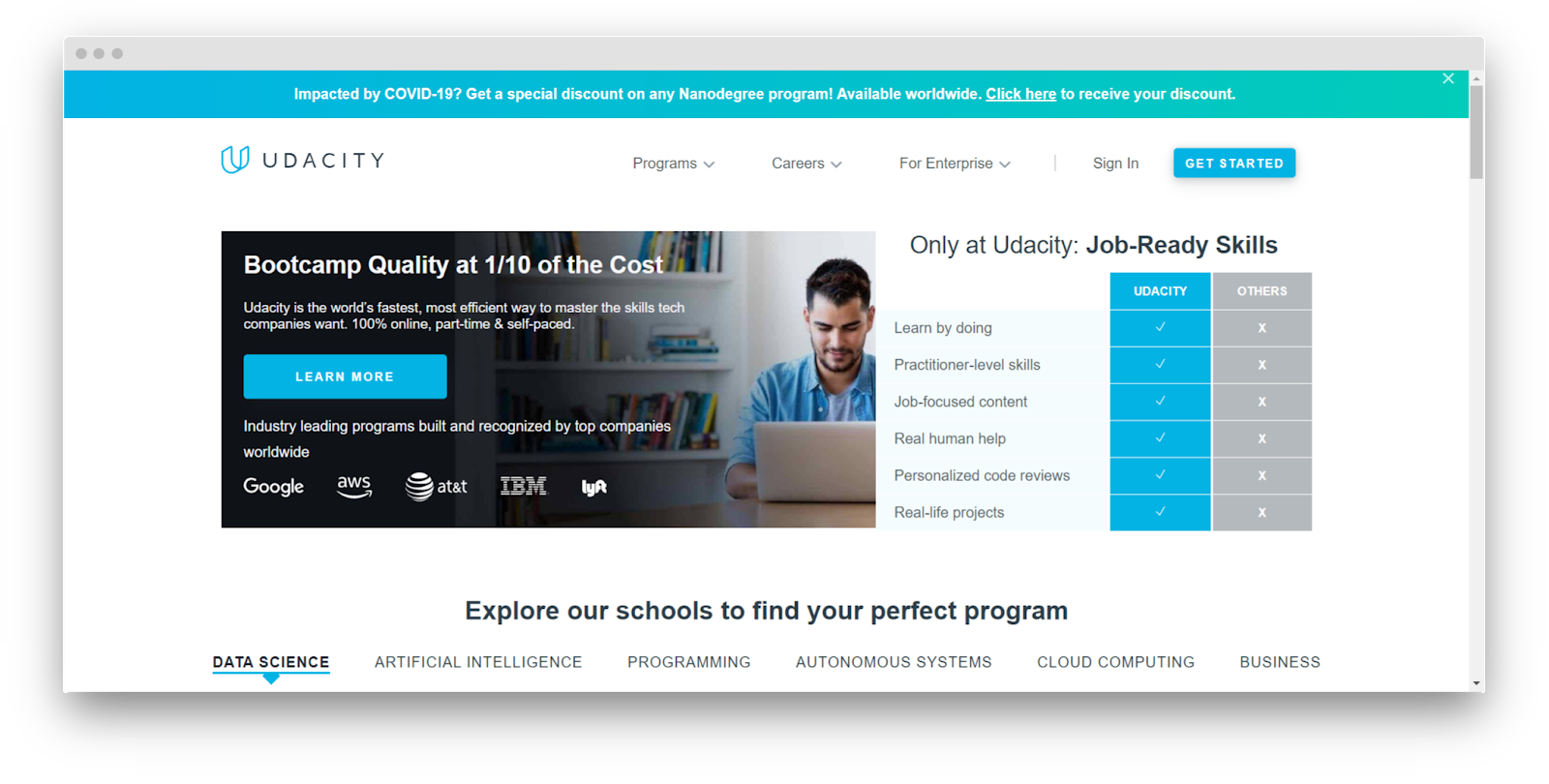
Why I put it on the list:
- Engaging lecture style. Instructors use catchy, descriptive content to help students retain coding concepts better. There’s a community to have your back as well - you can discuss coding with other users or reach out to instructors. The platform has office hours during which you can get answers to your questions.
- Wide course selection. Other than supporting all popular programming languages, Udemy updates courses regularly. On the platform, you can be confident that a Java course includes Lambdas and other newly introduced concepts - that applies to other languages as well.
- Dynamic learning. I love using Udacity because the courses here are not draggy. The lectures are highly dynamic and stimulating, you will feel like you learned something new after each study session.
Supported languages: Java, JavaScript, C++. R, HTML, CSS, MongoDB, Python, Swift, and more.
Pricing: Udacity has free, non-certified courses and nanodegrees - paid programs that give students a way to connect with instructors personally and offer a certificate after completion.
5. Udemy

Why I put it on the list:
- Courses are short and sweet. Learning programming with Udemy doesn’t feel like a massive commitment since most programs offer 10-15-minute-long classes. If you want to revise the material, you can come back to the video and replay it as many times as you want until you grasp the concept.
- Has big-name-backed programs. If you want to study based on Google’s and other top companies’ best practices, with Udemy, you get a chance to. The platform does a great job of attracting industry leaders in contributing to coding education.
- Get a certificate after completion. Although I don’t think certificates legitimize a developer’s skill (portfolio samples do), getting one gives you a sense of accomplishment, a feeling of seeing a commitment through. Also, if you want to pass an official programming language proficiency certification program, the platform features plenty of courses to help developers ace PCAP, Oracle Java Certification, and other tests.
Supported languages: Python, Java, C, C++, PHP, Swift, Objective-C, Ruby, Rust, and others.
Platforms: browsers, iOS, Android.
Pricing: Udemy has a pay-per-course monetization model. Course fees vary - students pay from $10 to $5000 for enrollment.
6. Educative.io
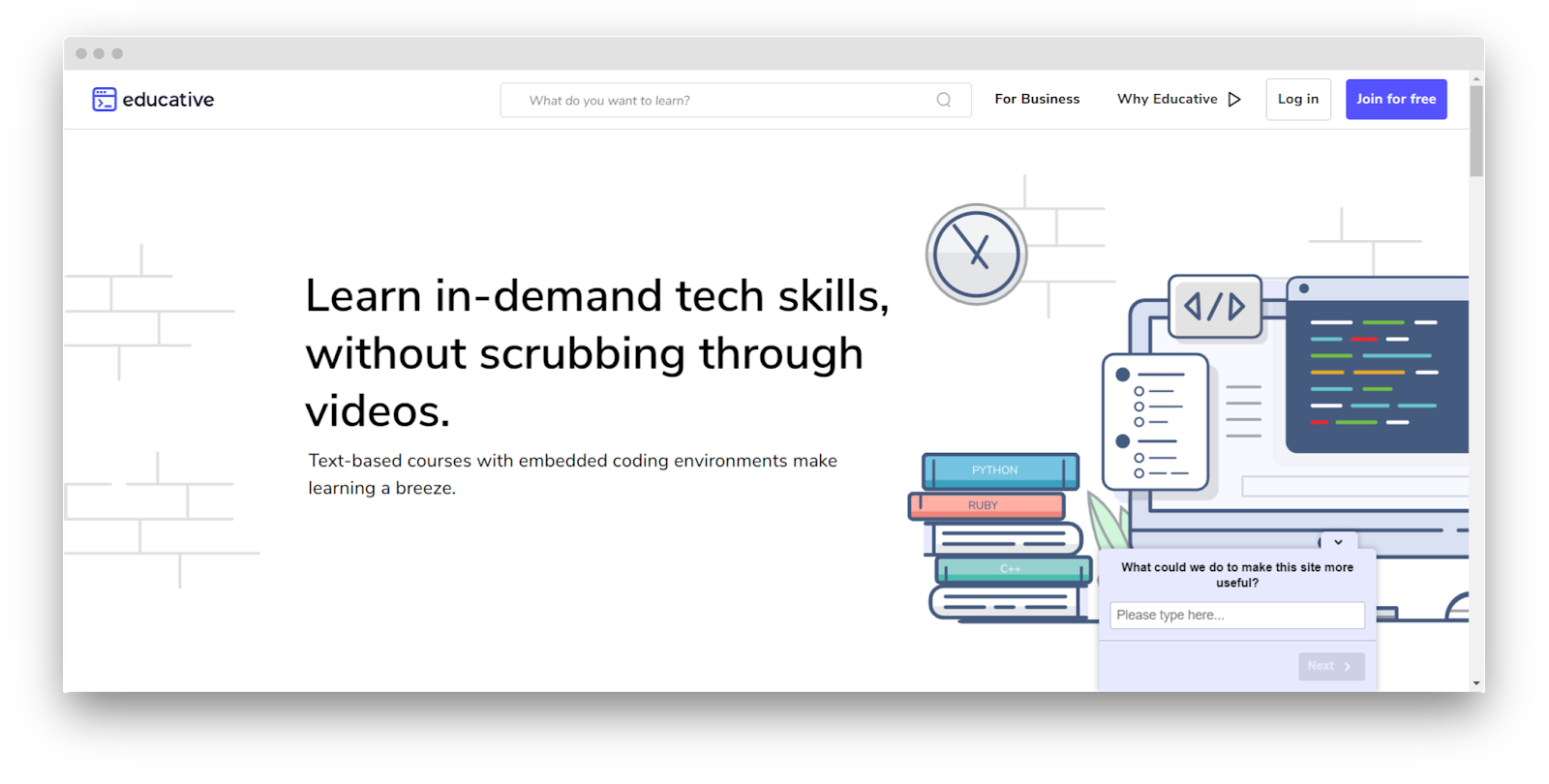
Why I put it on the list:
- Easy-to-use in-browser IDEs. The platform is extremely comfortable to code in - the built-in IDE is fast, requires no additional setup, and checks the accuracy of your code immediately.
- Text-based courses and quizzes. If you are not a fan of video-based education (why should I be bound to the lecturer’s teaching pace after all), the platform is the right one for you. It hosts text-based courses that come together with quizzes - these tests help you improve knowledge retention.
- All fundamental programming courses are free. Although you will have to pay to learn advanced technologies and processes (system design, algorithms, and others), all the basic programs (HTML, CSS, Java, Python, and C++) are free of charge.
Supported languages: JS, Java, Python, C++, C, Swift, Ruby, PHP.
Platforms: browsers
Pricing: to get access to all paid courses on the platform, coding students need to pay a monthly $20 fee.
7. Code4Startup.com
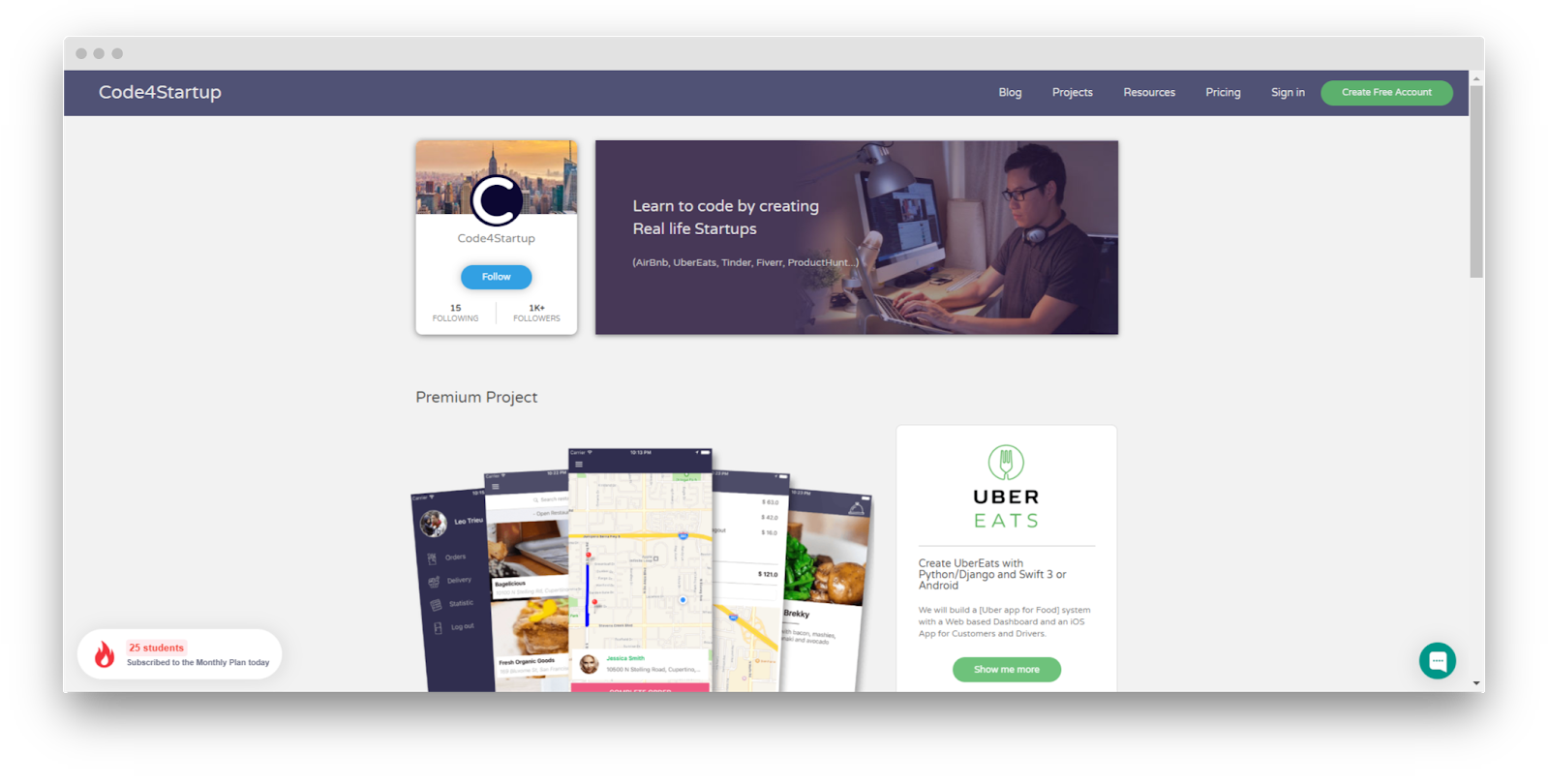
Why I put it on the list:
- Makes job hunting easier. Code4Startup collects coding assignments hosted by startups of different scales. Here, beginning developers can try handling projects from Uber, Airbnb, and other poster names of the startup world. The project-based nature of the course helps programming students validate their skills and make sure they can work in a fast-paced work environment.
- Completing a project doesn’t take a lot of time. On average, my students managed to complete Uber Eats and Tinder projects in 3-6 months. At such a pace, you’ll have a wide range of portfolio samples in a little over a year.
- Dozens of free courses. If you aren’t ready to pay a dime for programming education consider exploring the free courses hosted on the platform - ReactJS and Ruby programs hosted on Code4Startups are some of my favorite development courses of all times.
Supported programming languages: JS, Ruby, Java, Python, HTML, C++, C, and others.
Platforms: browsers
Pricing: to get access to projects startups host on the platform, programming students need to choose a subscription plan. The membership fees start at $29/mo.
8. Pluralsight

Why I put it on the list:
- Awesome course selection on web development. Now that Pluralsight acquired Code School, it’s become one of my favorite places for nailing both theoretical and practical concepts of front-end development.
- Groups courses by a developer’s proficiency. Before choosing a program, you can take a Skill IQ assessment. This is a short but well-rounded test that’ll quickly expose your weak spots in coding and help create an effective learning curriculum.
- You can organize lectures on channels. When you study a lot, eventually, it’s hard to structure information - before long, your brain starts melting in complete chaos. Pluralsight helps students keep track of lectures and retain concepts - you can save key insights to a personal channel and come back to it whenever you feel like it.
Supported programming languages: JS, Python, Java, C++, C#, PHP, SQL, and others.
Platforms: browsers, iOS, Android
Pricing: after completing a free trial, Pluralsight learners will have to pay a $19 monthly subscription.
9. MIT Courseware

Why I put it on the list:
- An engaging theory-based course. While practice is the backbone of coding, understanding theoretical concepts will make it easier to communicate at work, read documentation, and study. MIT Courseware hosts dozens of programs from one of the world’s top tech schools - it’s definitely worth checking out.
- Access to lectures and quizzes. The platform offers full immersion in CS with practical assignments, video lectures, slides, and interactive quizzes. That’s why I find it extremely useful for computer science undergrads.
- MIT OpenCourseWare is free. While can (and should) consider donating to support the platform, there’s no need to pay for programs.
Supported programming languages: Python, Java, C, C++, Ruby, and others.
Platforms: browsers
Pricing: free
10. Web Fundamentals
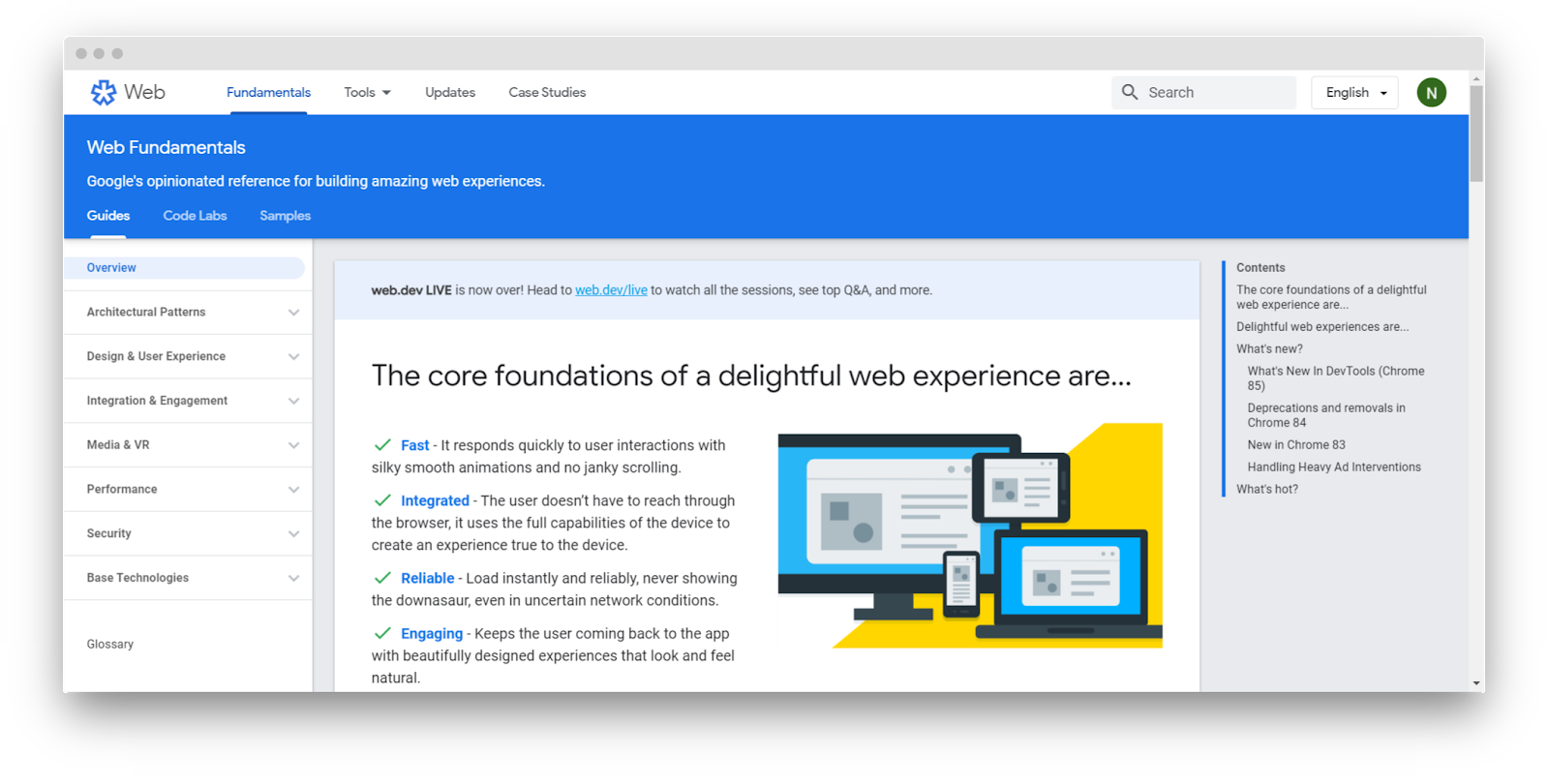
Why I put it on the list:
- Understanding web development is crucial regardless of which programming language you’ll specialize in. That’s why I believe that Web Fundamentals, a platform created at Google, should be at every student’s list of learning resources.
- Engaging, easy-to-complete courses - going through the basics and practicing the core concepts of HTML5 will not take much time. All you need to do is read a lecture and pass a series of interactive quizzes.
- Constant updates - since web development is highly dynamic, you need to choose a learning platform that follows modern best practices. Web Fundamentals goes hand in hand with the changes Google makes and teaches developers how to match the standards set by the search engine.
Supported languages: HTML, HTML5, JS, CSS
Platforms: browsers
Pricing: free
11. Hack.pledge()

Why I put it on the list:
- If you are into peer-to-peer learning, this platform is just the right fit. Here, top-notch developers share their experience and answer questions of novice peers.
- One of the few platforms where you can get a free call with a coding expert and have him review your code via a Skype call. Awesome, isn’t it?
- Top accelerator, startup, and large-scale company managers keep a careful eye on Hack.pledge() for job hunting. If you hang out there regularly, chances are, you’ll be able to land a well-paid tech job.
Supported programming languages: C, Java, C++, CSS, HTML, and more.
Platforms: browsers
Pricing: free
12. GitHub
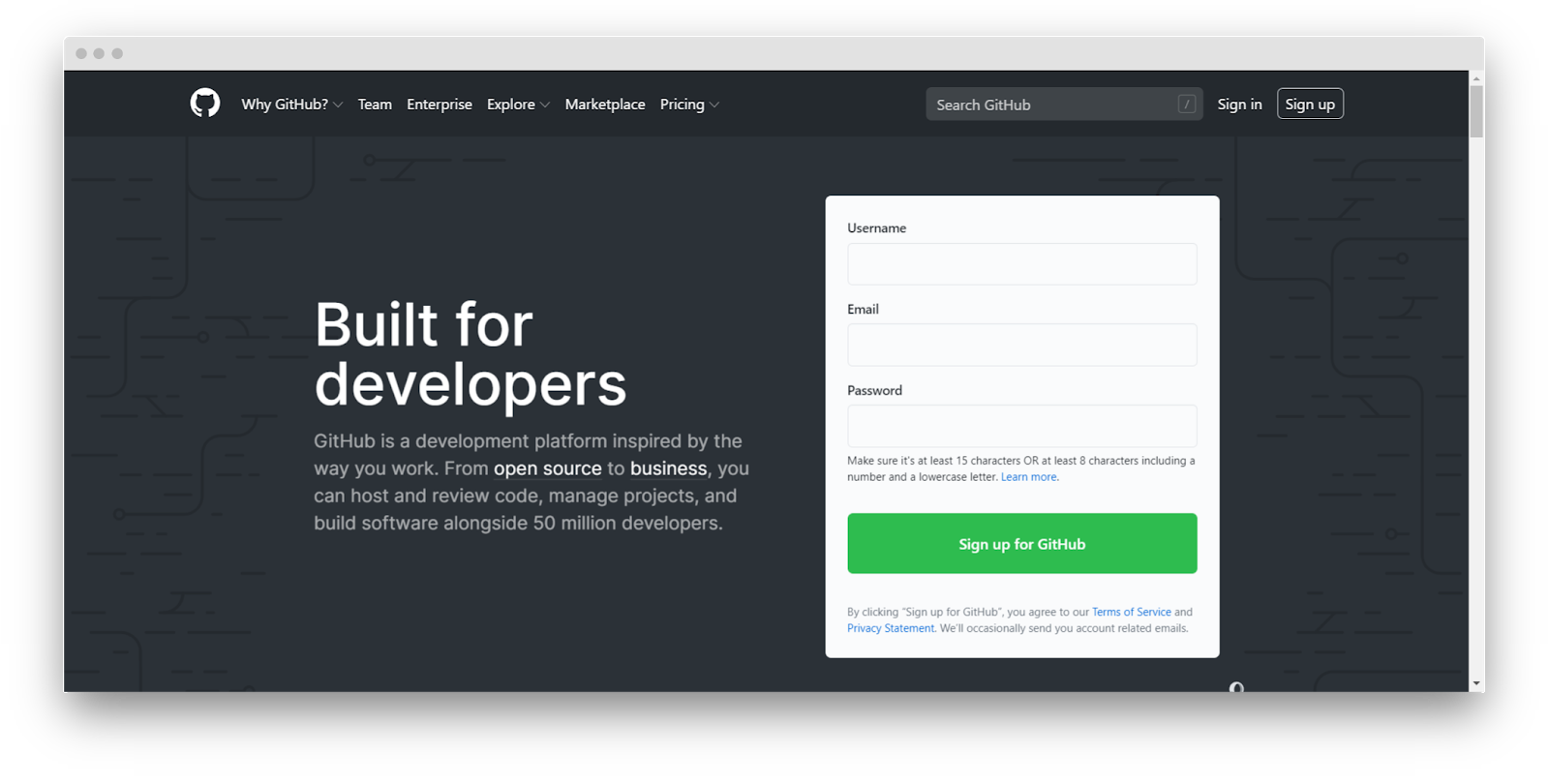
Why I put it on the list:
- Finding skilled developers and looking through their top projects is an efficient way to learn best coding practices. Even if you understand the syntax of a programming language, there are still light-years of a skill gap between you and the pros. GitHub helps you determine what distinguishes extraordinary coders from the mediocre ones and hone your craft.
- GitHub helps choose your next language. The number of GitHub repository followers and active projects is a way to determine how popular technology is in the industry. That’s why I recommend my students to take a GitHub stroll when they are deciding on the next programming language to learn.
- GitHub hosts documentation on languages and frameworks - you can use these files as references for future projects.
Supported programming languages: all the common ones.
Platforms: browsers, iOS, Android
Pricing: free, with paid subscriptions starting at $4/m
13. Coderbyte
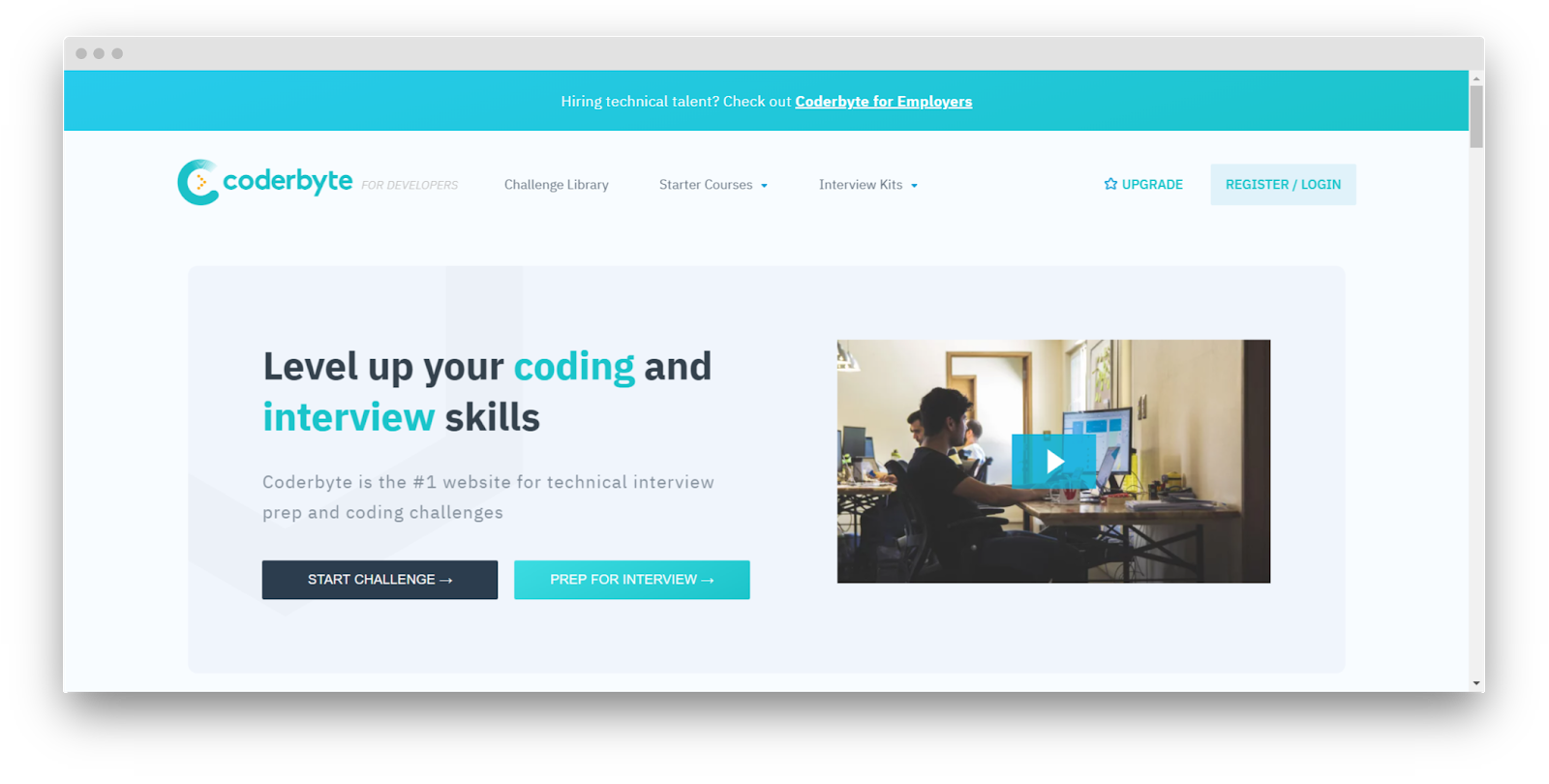
Why I put it on the list:
- This one is a practice-based platform with over 200 coding tasks - it will definitely prepare you for a real-world job interview.
- Sleek and easy-to-use interface - using Coderbyte to study felt like a seamless and enjoyable experience for me.
- Community-based - you can see the ways other people found to solve a coding problem. This way, students get to see other trains of thought and notice out-of-the-box approaches to coding.
Supported programming languages: C, C++, C#, Java, JS, Python, Swift, Kotlin, Go, Ruby, TypeScript. The top back-end and front-end technologies are covered as well.
Platforms: browsers
Conclusion
Personally, I think that programming is one of the most open fields - you don’t need a degree to get a job and become a top-notch professional. Once you look closer, hundreds of learning resources open before your eyes. As long as a development student has enough dedication to exploring these, he can walk the path from a beginner to an intermediate developer, relevant in the job market in just a couple of years.
First published on IT Toolbox.

Thanks for sharing this.